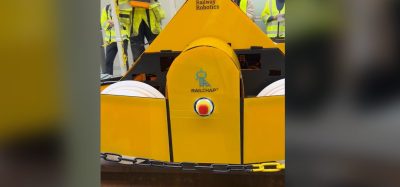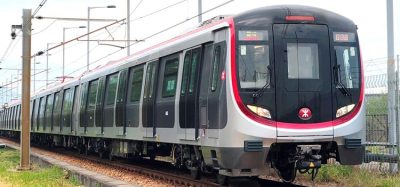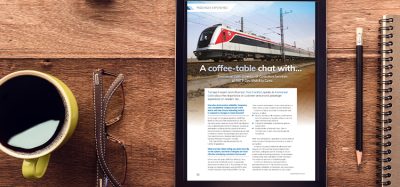New U.S. standards create safer trains
Posted: 1 August 2012 | | No comments yet
With experience from Voith Turbo, latest specifications help define Crash Energy Management systems for U.S. rail systems.
The U.S. rail system has always trailed behind those in the global rail market in utilising the latest technology, but new regulations institut – ing Crash Energy Management (CEM) is accelerating them into the modern world.
Two major rail accidents occurred in the U.S. making national headlines and forcing the U.S. Federal Railroad Administration to take notice. In 2005, a fatal train crash in Glendale, California, killed 11 passengers after a rail car hit a sports utility vehicle left abandoned on the rail, causing the train to jackknife and collide with other cars. After this incident, the U.S. Federal Railroad Administration started to acknowledge that an update to the current safety regulations may be necessary.
During this time, a new procurement for additional Metrolink cars was put on hold, upon further U.S. government investigation. During the FRA investigations in 2006, Voith Turbo was invited to a test of the CEM system, along with representatives from the Southern California Regional Rail Authority. Voith Turbo has already been a supplier of this CEM technology worldwide, so it was a quite familiar application.
With experience from Voith Turbo, latest specifications help define Crash Energy Management systems for U.S. rail systems. The U.S. rail system has always trailed behind those in the global rail market in utilising the latest technology, but new regulations institut - ing Crash Energy Management (CEM) is accelerating them into the modern world. Two major rail accidents occurred in the U.S. making national headlines and forcing the U.S. Federal Railroad Administration to take notice. In 2005, a fatal train crash in Glendale, California, killed 11 passengers after a rail car hit a sports utility vehicle left abandoned on the rail, causing the train to jackknife and collide with other cars. After this incident, the U.S. Federal Railroad Administration started to acknowledge that an update to the current safety regulations may be necessary. During this time, a new procurement for additional Metrolink cars was put on hold, upon further U.S. government investigation. During the FRA investigations in 2006, Voith Turbo was invited to a test of the CEM system, along with representatives from the Southern California Regional Rail Authority. Voith Turbo has already been a supplier of this CEM technology worldwide, so it was a quite familiar application.
With experience from Voith Turbo, latest specifications help define Crash Energy Management systems for U.S. rail systems.
The U.S. rail system has always trailed behind those in the global rail market in utilising the latest technology, but new regulations institut – ing Crash Energy Management (CEM) is accelerating them into the modern world.
Two major rail accidents occurred in the U.S. making national headlines and forcing the U.S. Federal Railroad Administration to take notice. In 2005, a fatal train crash in Glendale, California, killed 11 passengers after a rail car hit a sports utility vehicle left abandoned on the rail, causing the train to jackknife and collide with other cars. After this incident, the U.S. Federal Railroad Administration started to acknowledge that an update to the current safety regulations may be necessary.
During this time, a new procurement for additional Metrolink cars was put on hold, upon further U.S. government investigation. During the FRA investigations in 2006, Voith Turbo was invited to a test of the CEM system, along with representatives from the Southern California Regional Rail Authority. Voith Turbo has already been a supplier of this CEM technology worldwide, so it was a quite familiar application.
In 2008, the most deadly crash in Metrolink history occurred, killing 25 passengers. The crash was a result of a head-on collision, causing the rail cars to pile up on top of each other. The consequence of this crash solidified the change requiring the focus on the well-being and safety of the train passengers. In the months that followed, the FRA released a regulation update, in order to meet the current safety standards in the U.S. passenger rail market. The SCRRA Metrolink project was the first U.S. rail system to implement the new features of Crash Energy Management, choosing Voith Turbo to be the first supplier of this technology in the U.S. rail market.
Consequently, Voith as an expert in the field of crash protection and energy absorption, was invited to attend several U.S. committees, including the PRIIA 305 (Passenger Rail Investment and Improvement Act) committee concerned with the preparation of specifications and recommended practices for the next generation of safe trains.
The Metrolink CEM solution has also been adopted by the Wisconsin and Oregon AMTRAK projects built by Talgo as well as for the SMART (Sonoma Valley) and Metrolinx (Toronto) DMU projects built by Nippon Sharyo. The latest procurement won by Voith has been from Siemens for the equipment on 70 AMTRAK locomotives. It is the first project to comply with the PRIIA 305 Locomotive Specification.
With the prospect of recent new procure – ments enforcing the updated specification, Voith Turbo will have continued success as the expert and leader in CEM technology for the U.S. rail market.
About the author
Tony Jones is a Sales Representative/ Application Engineer at Voith Turbo Scharfenberg. After completing his Electrical and Electronic Engineering Diploma in South Cheshire, UK, he went on to gain experience in electrical engineering, vehicle design and sales. Tony is active in a number of Industry committees, currently supporting the APTA Push Back Coupler and Crash Energy Management Committees, FRA RSAC Task Force 1 & 2 for Tier 1, 2 and 3 rolling stock and PRIIA 305 Amtrak Next Generation Rail Vehicles Specifications where he is able to contribute on CEM equipment and applications.






